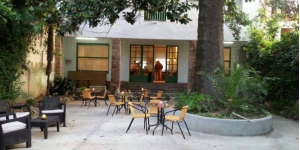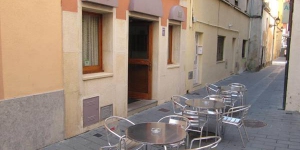It is the oldest music festival in the Costa Brava, and its origins date back to 1958. Many of the performances are held inside the Monastery Porta Ferrada, a pre-Romanesque jewel which lies very close to the beach in the village. Summer after summer, this festival has attracted renowned international figures like Bryan Ferry, Pretenders, Sinead O'Connor, Al Jarreau, Serrat, etc. The festival also includes prestigious performances of classical music, theater and dance.
Porta Ferrada Festival Map
- Apartments(10)
- Villas(8)
- Campings(1)
- Hotels(15)
- Beaches(14)
- Music Festivals(1)
- Churches(1)
- Nature reserve(1)
- Museums(1)
- Scenic viewpoints(1)
- Megaliths(1)
- Buildings(1)
How to arrive to Porta Ferrada Festival?
How to arrive from:Porta Ferrada Festival Photos
Other interesting places near here
-
 3.1 miles away
3.1 miles awayThe International Music Festival s'Agaró is celebrated during the months of July, August and September, in a series of classical music concerts with international artists. The stage is held in the s'Agaró old church, near the sea, with performances ranging from bel canto, chamber quartets, piano concertos, violin, and thematic nights dedicated to great historical musicians like Wagner, Verdi, Handel, etc.. Look out the concert program and ticket prices, which can be purchased online at the website of the festival organized by the Pau Casals Association since 1998.
 3.8 miles away
3.8 miles awayDolls from all over the world made of all sorts of materials (straw, tin, leather, ivory, etc.). The history of childhood by means of one of its most beloved objects.
... 3.9 miles away
3.9 miles awayNext to the church, the restored Castell de Benedormiens looks as though it’s grown out of the rock. Built in the eleventh century, it was burnt in 1462 and then destroyed by an explosion in 1879, after which it was left to moulder until restoration last century. Little of the original structure remains, although excavations in the old moat are turning up some finds, including many relating to an iron-wo......
Quick search
...and near here:
Hotels Sant Feliu de Guíxols (15)
-
 Hotel Montjoi178From 0.00€
Hotel Montjoi178From 0.00€ -
 Hotel Coral90From 0.00€
Hotel Coral90From 0.00€ -
 Hostal Noray i Rigau102From 0.00€
Hostal Noray i Rigau102From 0.00€ -
 Hotel Jecsalis50From 0.00€
Hotel Jecsalis50From 0.00€ -
 GHT S'Agaró Mar...67From 0.00€
GHT S'Agaró Mar...67From 0.00€ -
 Confortel Caleta Park417From 0.00€
Confortel Caleta Park417From 0.00€ -
 Hotel Gesòria Porta ...126From 0.00€
Hotel Gesòria Porta ...126From 0.00€ -
 Hotel Plaça105From 0.00€
Hotel Plaça105From 0.00€ -
 Hotel Restaurante del...167From 33.25€
Hotel Restaurante del...167From 33.25€ -
 Hostal El Cisne101From 47.00€
Hostal El Cisne101From 47.00€ -
 Can Segura HotelFrom 50.00€
Can Segura HotelFrom 50.00€ -
 Van der Valk Hotel Ba...239From 55.00€
Van der Valk Hotel Ba...239From 55.00€ -
 Hotel Eden Roc597From 60.15€
Hotel Eden Roc597From 60.15€ -
 Hotel Restaurant Sant...178From 69.00€
Hotel Restaurant Sant...178From 69.00€ -
 Hotel Hostal del Sol305From 80.00€
Hotel Hostal del Sol305From 80.00€
Costa Brava Guide
2024 @Costa Brava's. All Rights Reserved.


